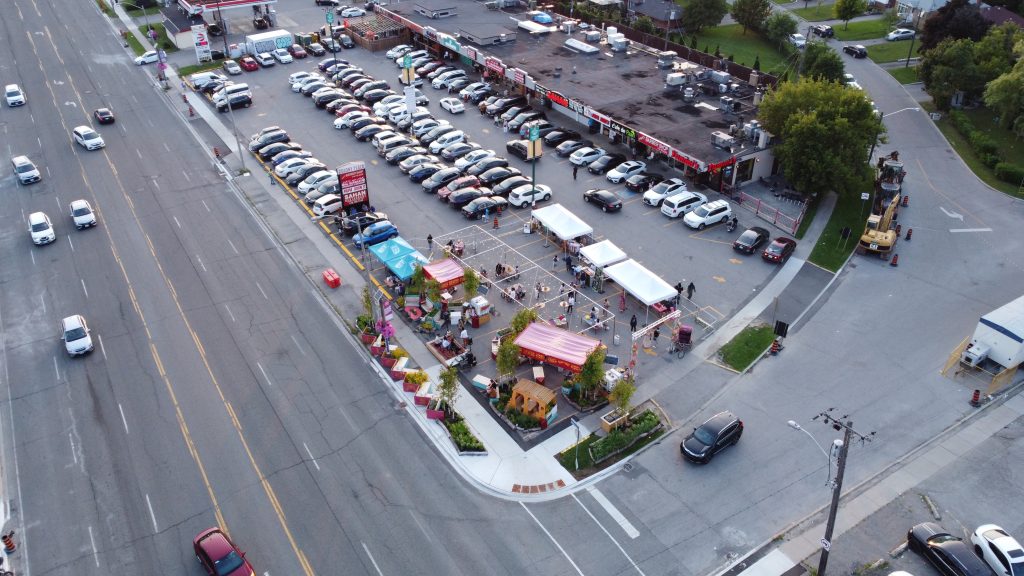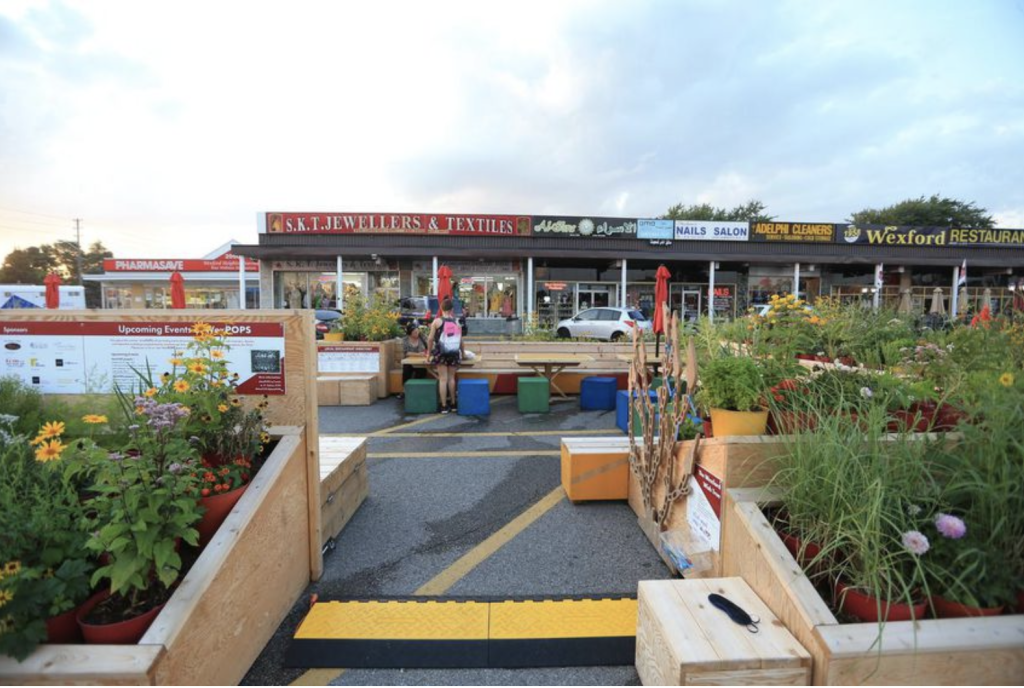By Gilbert Ngabo
Link to article
A linear park in the heart of downtown. A green pop-up square in the middle of a strip mall’s parking lots. A train-watching area or a community cafe out of a shipping container.
These are among five community initiatives that have won grants between $15,000 and $50,000 from the Public Space Incubator, a challenge from advocacy group Park People, to implement bold concepts for better use of public spaces across the city.
The announcement comes as Toronto celebrates completion of the first phase of the Bentway, a project that transformed the dull Gardiner Expressway underpass into a skating trail and a vibrant community gathering space. Like the Bentway, the new initiatives aim to liven up some of the city’s unused or underutilized open spaces, and make those spaces more welcoming and engaging for people.
Park People’s manager of policy and planning Jake Tobin Garrett said the group received more than 70 letters of intent for the grants, which were narrowed down to the final 25 applications from which the five winners emerged.
“We knew we would get a lot of interest in this, but we were surprised to receive so many applications,” he said of the program, which was made possible by $340,000 in funding from the Balsam Foundation and renowned urban planner and architect Ken Greenberg and his wife, Eti.
The main objective of the challenge was to solicit ideas that could shake up how we generally view public spaces, Garrett said, noting the effective use of shared space is becoming more important as more people move into the city and into smaller condos and apartments.
“There’s a lot of focus, I think, as we grow as a city and increase in density and we’re seeing all these new people moving in and neighbourhoods sort of changing, to focus on making our collective spaces the best that they can be,” he said.
The winning projects include PlazaPOPS, which will transform the parking space along a strip mall on Lawrence Ave. near Wexford Heights in Scarborough into a parklet for artistic engagement, starting next spring. The pop-up plaza concept originated in San Francisco, and has expanded to other cities.



